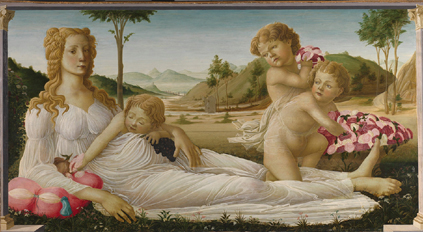''Fakes, Mistakes and Discoveries” at the National Gallery.
When Nicholas Penny became Director of the National Gallery he pledged to put the permanent collections of the museum centre stage, even if that meant diverting energies away from the lucrative blockbusting loan exhibitions – “Late Caravaggio”, “Velazquez”, “Picasso and the Masters”, and the like – that have become synonymous with the institution in recent years. True to his word, the summer’s main show in the Sainsbury Wing galleries focusses on paintings which the museum already owns. The absence of expensive overseas loans means that the exhibition is free of charge – a distinct plus, in these straitened times – although it remains to be seen whether it can draw in the public in sufficient quantities to justify further experiments of the same kind.
Arousing fresh interest in Old Master paintings which, in some cases, have been part of the National Gallery’s collection for a century and more is inevitably a challenge. “Close Examination: Fakes, Mistakes and Discoveries” does not seek to put such pictures in the spotlight so much as under the microscope. The whole of this essentially science-and-scholarship-driven show might be seen as something of a public accountability exercise, in that its principal purpose is to make as visible as possible the museum’s own procedures of attribution and reattribution – and indeed, in some cases, its occasional history of rank misattribution.
The sorriest example of an outright fake purchased by the museum, dredged up from the remotest corner of its most obscure “study gallery” in the Orange Street wing, is a work curtly labelled “Unknown Italian Artist, Portrait Group, early twentieth century”. Three bone-jawed figures, a woman and two children, stand silhouetted by the open window of some imaginary Florentine palazzo. The style is pastiche Giorgio de Chirico, iced with...


